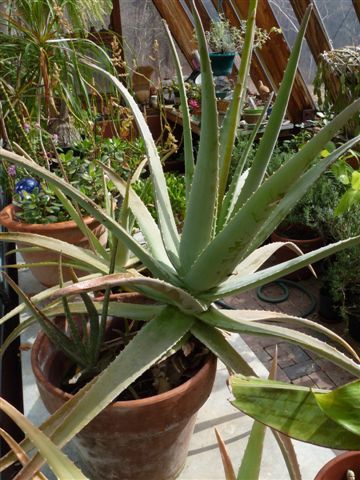
This time of year, I give myself cold-weather peptalks to prevent cabin fever from setting in. I also fix tropical-inspired menus and rum punch when I feel the need. Even though we have had a remarkably mild winter, this double earth-sign gardener tends to get the February blues. I must say that I was outdoors a number of days this past week. The snowdrops are blooming and the daffodils are budded; there were some bluebird scouts about. We pruned, cut back, trimmed, raked, hauled and did general garden maintenance and cleanup. It felt good and looks a lot better, however it is not quite the same as nurturing little green growing things. As I await the growing season, besides perusing garden catalogues and books, I look to my greenhouse and houseplants for green comfort.
A houseplant that I would not be without is Aloe vera (Aloe vera). This tropical succulent is a stalwart plant from Africa, Arabia and the Cape Verde Islands along the Mediterranean coast. However, since it is a tropical plant, it will suffer if left outdoors when the night-time temperatures dip below 40° F; these plants must be brought inside a heated greenhouse or sunroom in order to survive cold winters (colder than zone 10). I grow it in a terracotta pot, which helps promote a healthy root system. The plant is fairly easy to grow and its most important requirement is a place where it gets sunlight all day.
In its native habitats, it grows mainly in sand or a very sandy soil, in full hot sun, and it doesn’t get a lot of rain, except in the rainy season, which mostly means a passing shower in the afternoon. Therefore, I grow it in a mix of sand, with some amended, nutritive potting soil mixed in and lava rock or charcoal for porosity. In Richo Cech’s Spring/Summer 2012 catalog, Horizon Herbs: Seed of Medicine, Seeds of Sustenance, he recommends, “Aloes do best in ceramic pots. Cover the hole in the bottom of the pot with a shard, then fill 1/3 with sand. Then fill the middle of the section of the pot with compost. Then fill up to the brim with sand. Plant the aloe down into these layers.”
Richo also recommends not to water transplants for the first 2 weeks and then only water every 3 weeks or so. In summer I water more often and in winter I water less often or when the potting medium is dry. When I do water, I soak the medium thoroughly, so that the roots will grow deep into the pot and I allow the medium to dry out in between watering. Plants that don’t get enough sunshine and aren’t watered deeply, can become top-heavy with weak roots and the pots will tip over. Besides numerous other wonderful plants, Richo offers five aloes for sale, from seeds, or plants at www.horizonherbs.com.
From around the globe, there are over 250 species of aloe plants from miniatures to those as tall as trees. They bloom in many colors and right now, my aloe has sent up a flower spike, blooming in captivity for the fourth year in a row! It does this in February and blooms in March—not in the summer as one might imagine. The blooms are a yellow-coral color. This large plant produces baby plants around the base of the grandmother plant, which I regularly dig and transplant to produce new plants. The baby plants don’t mind being crowded and I generally wait until they are at least 3 to 4-inches tall, or more, before transplanting.
The Arabic word alloeh means “bitter” and the sap or juice of this plant is indeed that. Also known as “the burn plant”, the gelatinous leaf juice is used topically to treat minor burns and wounds. I keep this plant nearby the kitchen as it is a balm to cooks, so I can slice off a leaf, whenever I get a burn. It soothes a sunburn, insect bites and minor skin irritations too; when the juice or sap is applied it is immediately cooling and soothing. The juice is antiseptic, digestive, emollient, insecticidal and larvicidal. The yellow juice, present just under the outer-leaf skin, is a powerful purgative when taken internally. (Persons suffering from spastic colon should not take aloe vera juice or other herbs containing anthraquinone, which is a purgative.)
When I am in need of the aloe, I generally take a sharp knife and cut a bottom leaf from the plant, as close to the stem as possible. I hold my hand over the cut part of the plant for a brief time to catch the flow of the liquid sap and give thanks for the herbal medicine. Hold the cut side of the leaf upwards, so the sap doesn’t ooze out. I apply this liquid as needed. If I need a lot, then I slice the leaf open and use the gelatinous sap. Then I cover the cut end with waxed paper or plastic and keep it in the refrigerator to reapply as needed. If you don’t have an Aloe Vera in your home, now is the time to acquaint yourself with this perennial succulent.
Both Susan and Richo Cech, along with Steven Foster, will be giving talks at the Memphis Botanic Garden Herb Symposium on Saturday, June 9. www.memphisbotanicgarden.com


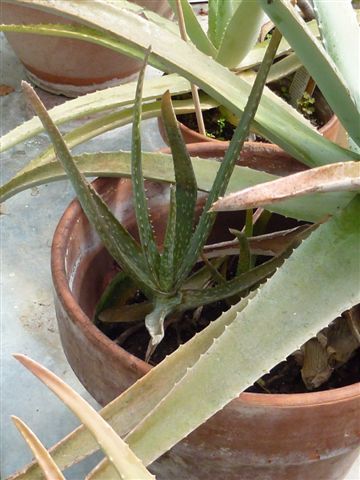
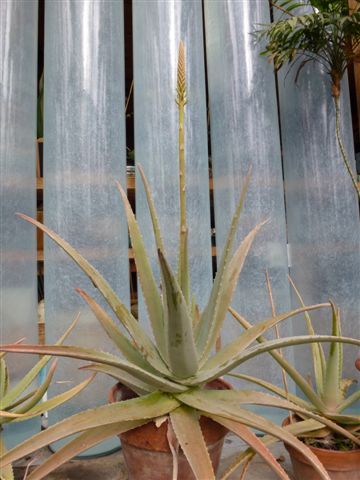


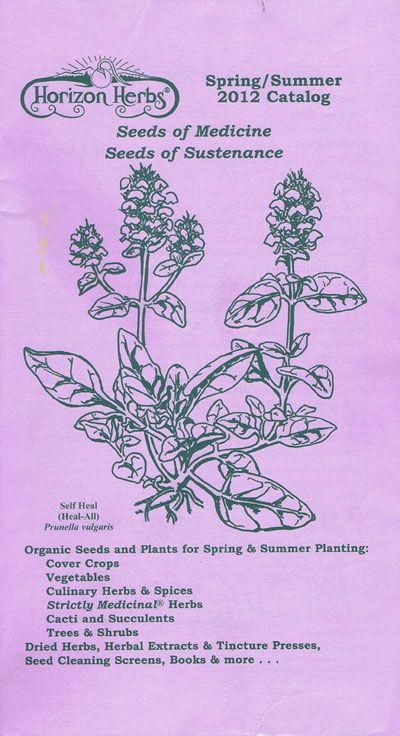

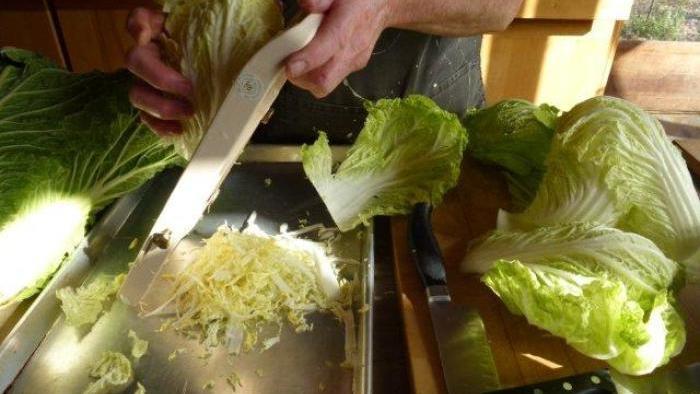














Comments
Log in or create an account to post a comment.
Sign up Log in